What is a solar eclipse and when and where is the next one?
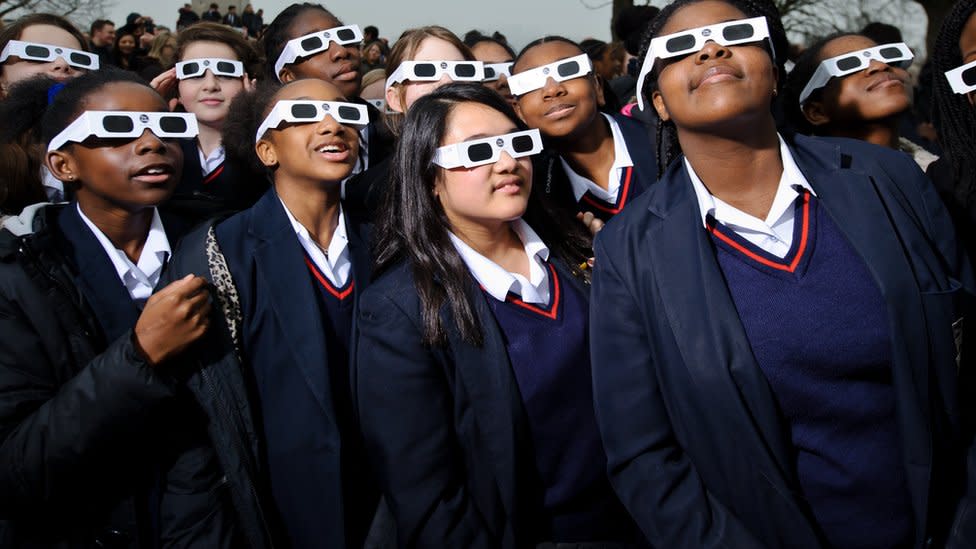
A total solar eclipse was seen across North America on 8 April - from Mexico to the very eastern tip of Canada.
The astronomical phenomenon was less dramatic in the UK, but a partial eclipse was visible in some parts of the country.
What is a solar eclipse?
A solar eclipse occurs when the Moon moves between the Earth and the Sun, blocking some or all of the Sun's rays from reaching the Earth.
The phenomenon is a cosmic event, requiring the Sun, the Moon and the Earth to be in a precise alignment.
When this happens, the Moon casts two types of shadows.
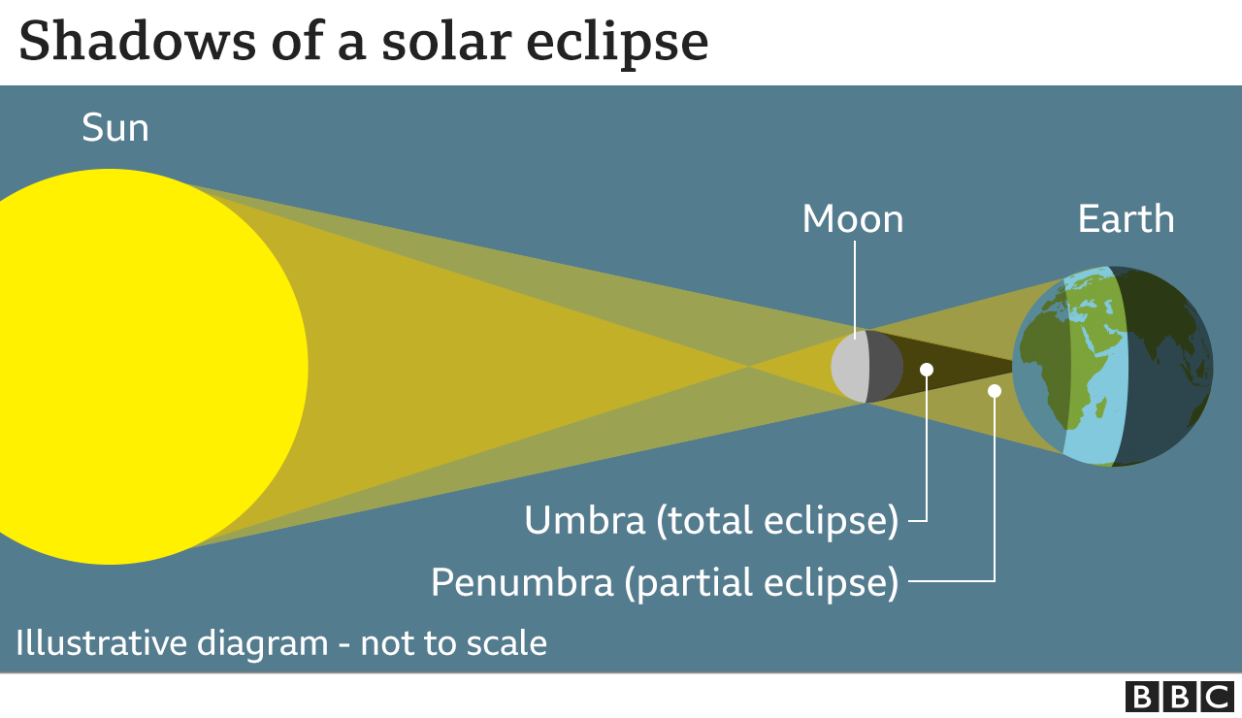
A "penumbra" results in a partial solar eclipse, which covers only part of the Sun.
The more spectacular "umbra" creates a total solar eclipse, where the Sun's disc is entirely covered by the Moon, save for a delicate halo of scattered light coming from our star's outer atmosphere.
A total solar eclipse occurs somewhere on Earth roughly every 18 months or so.
When and where is the next solar eclipse?
The next partial solar eclipse which will be visible from the UK is due to take place on 29 March 2025, when 30 to 40% of the Sun's rays are expected to be blocked.
On 12 August 2026, there will be a total eclipse which should be seen from the Arctic, eastern Greenland, Iceland and northern Spain, according to the US's National Oceanic and Atmospheric Administration.
In parts of the UK, 90% of the Sun will be obscured by the Moon during the event.
The next full solar eclipse in the UK isn't expected for another 66 years, on 23 September 2090, according to the Royal Observatory in Greenwich.
The UK's last total solar eclipse occurred in 1999. Thousands of people flocked to Cornwall, which was the only place in the UK to witness the event in its totality.
The US experienced a total solar eclipse in 2017.
What happened in the 2024 North American eclipse?
Tens of millions of people across Mexico, the US and Canada gathered to view the total eclipse on Monday 8 April.
Its shadow first touched the surface of the Earth in the Pacific Ocean before travelling across Mexico.
The eclipse brought darkness to large areas of Texas, including the cities of Austin and Dallas.
The path of totality included the east coast of the US.
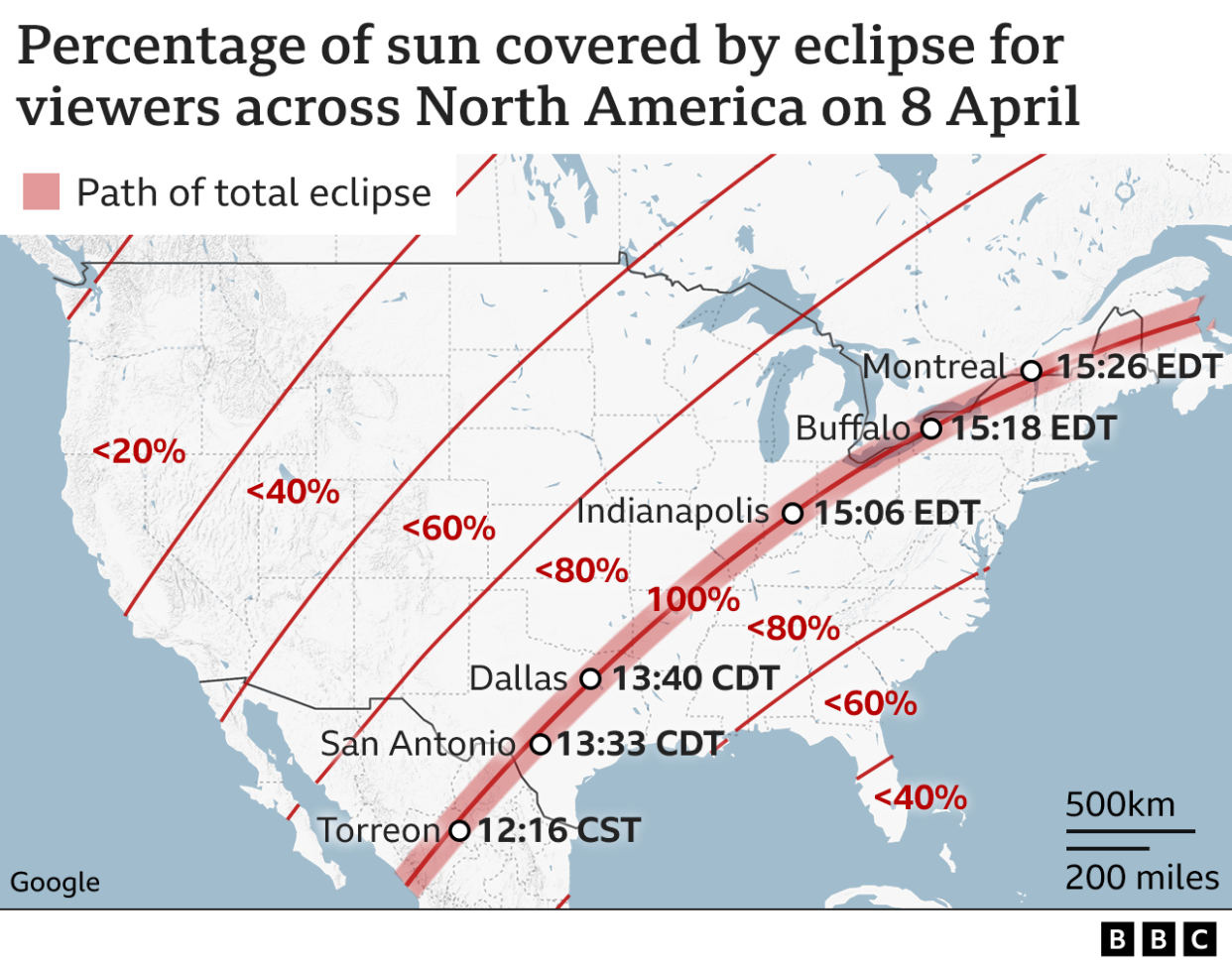
Canada was the last country to catch a glimpse before it crossed into the Atlantic Ocean out of view.
The Moon's full shadow ended its journey across the Earth in the Atlantic Ocean about 620 miles (1,000km) from Cornwall in south-west England.
Where was the Northern American eclipse visible in the UK?
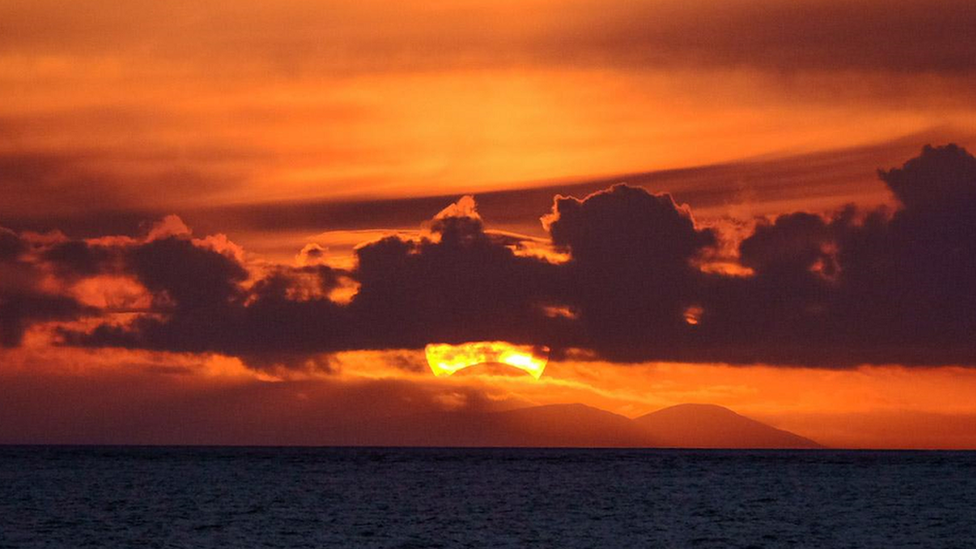
People in the western parts of the UK were hoping to catch a glimpse of a partial eclipse.
However, cloud cover meant many were left disappointed.
Some people in northern and western Scotland, where there were clearer skies, did manage to get a view of the Moon biting the edge of the Sun as it disappeared over the horizon.
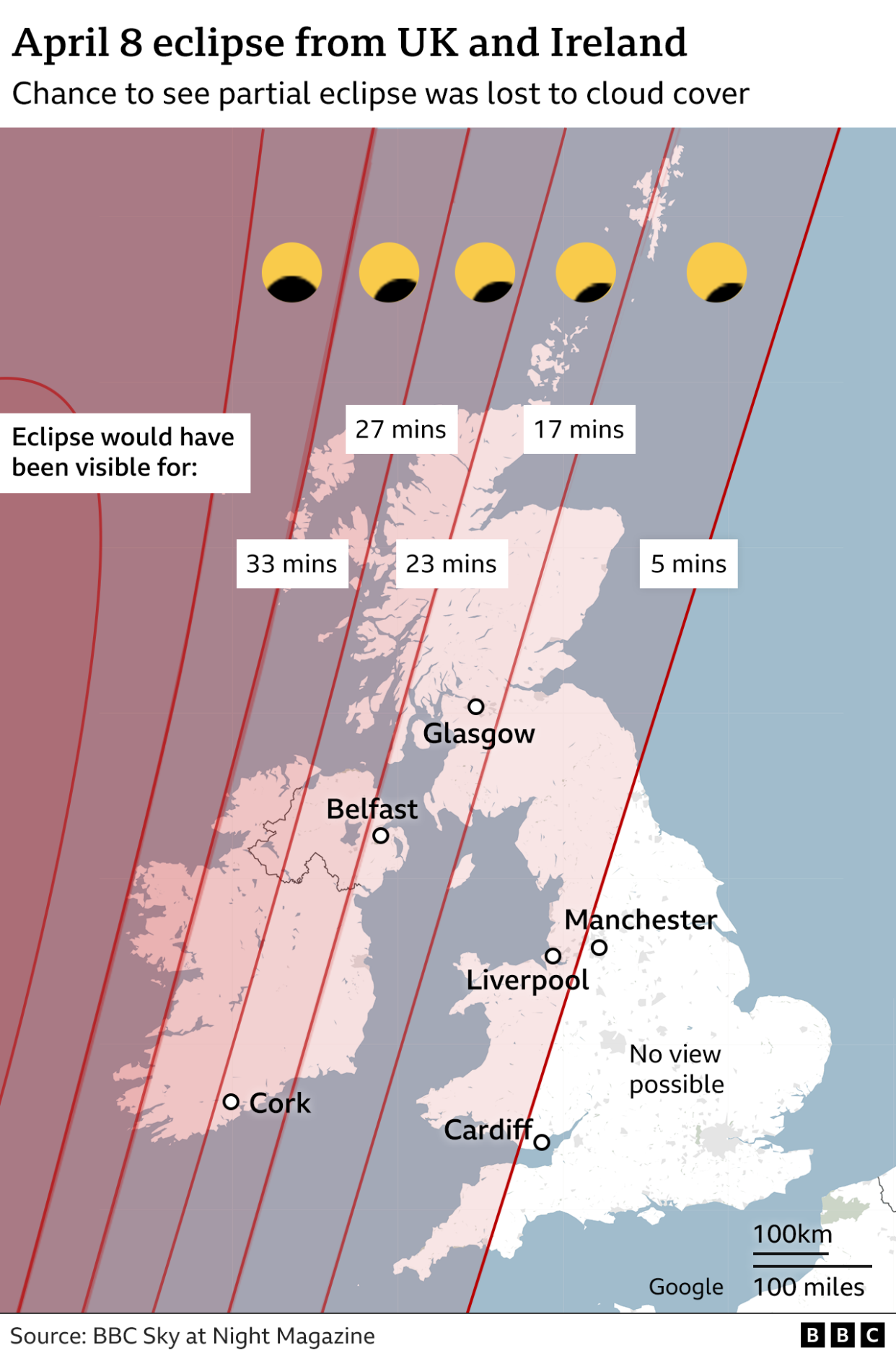
How can I safely watch an eclipse?
The old advice of never looking directly at the Sun applies: you should not stare at an eclipse.
Experts recommend using solar eclipse glasses, which have a special filter that blocks damaging UV rays. These glasses are different from sunglasses, as they block all light entirely except that coming from the Sun.
If you can't get glasses, try piercing a hole using a pin into one piece of paper. With your back to the Sun, hold that paper above your shoulder so the sun's rays can shine through that small little hole.
At the same time, hold up another piece of paper in front of you.
It will act like a screen, on to which the Sun's rays will be projected.
